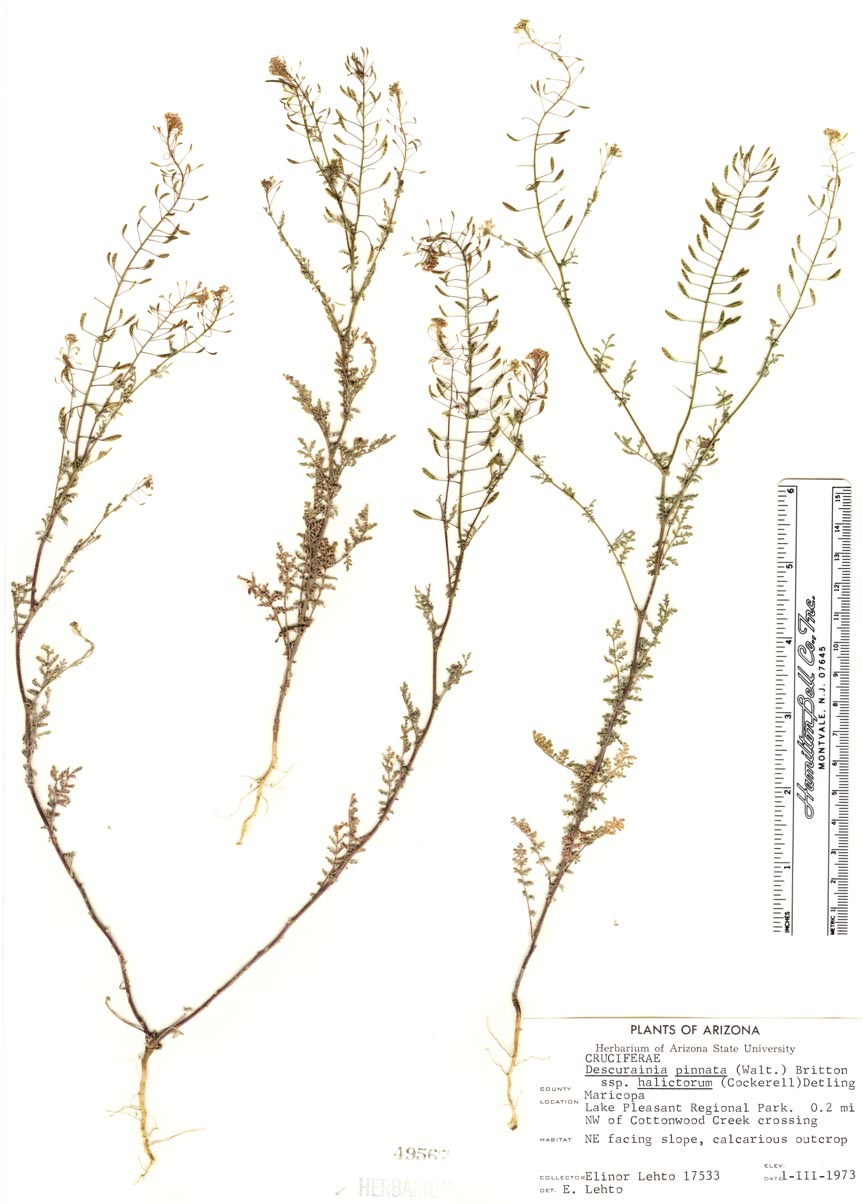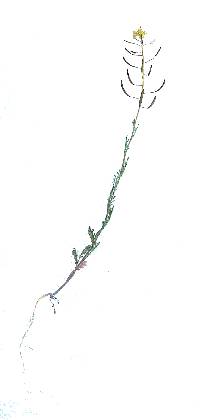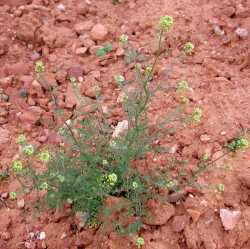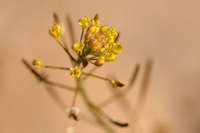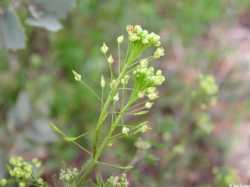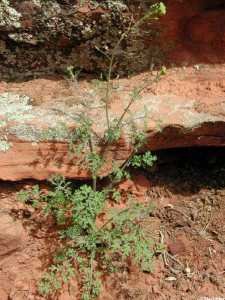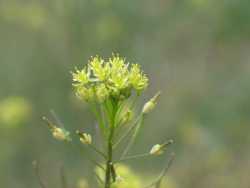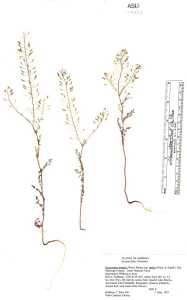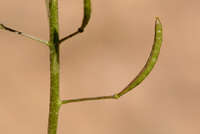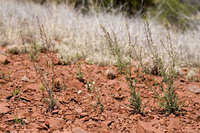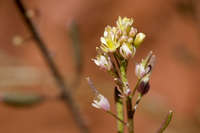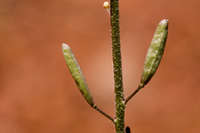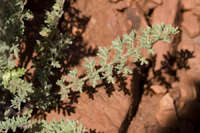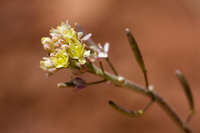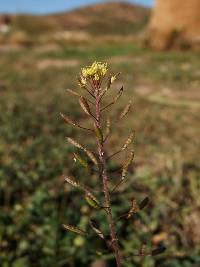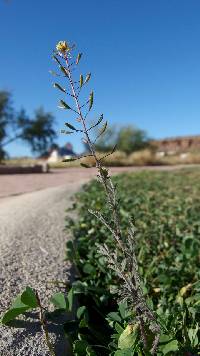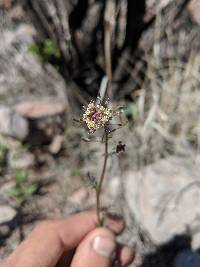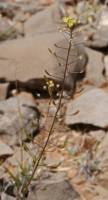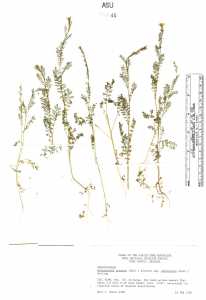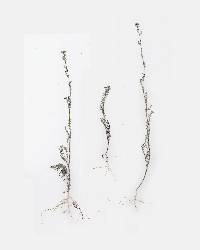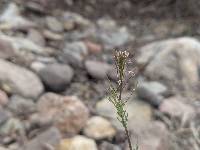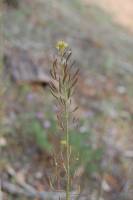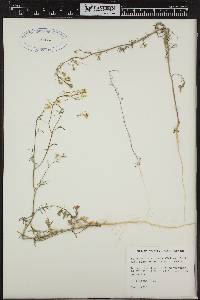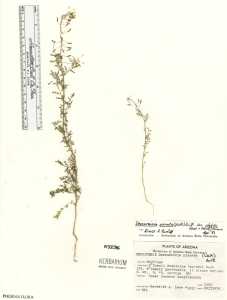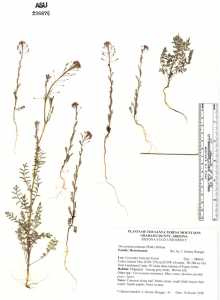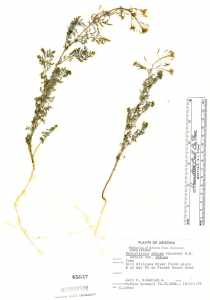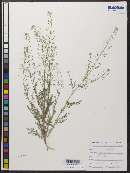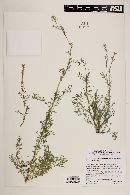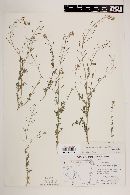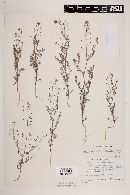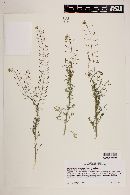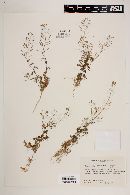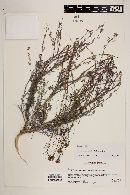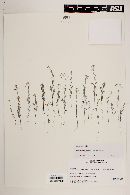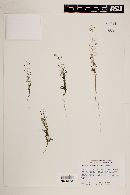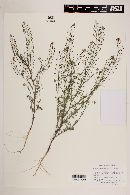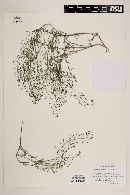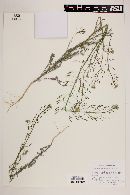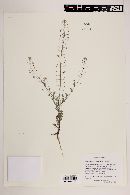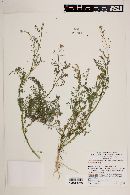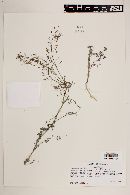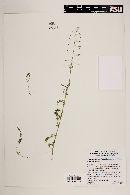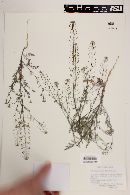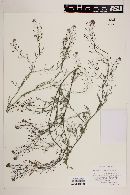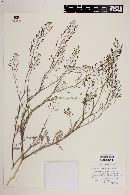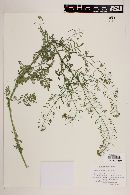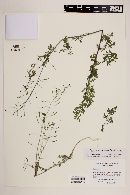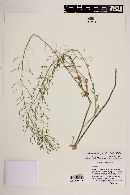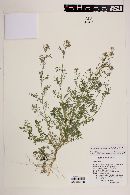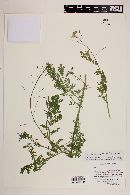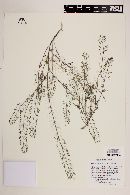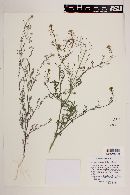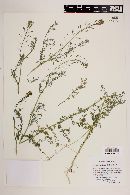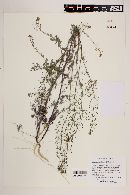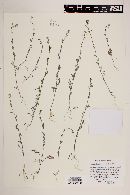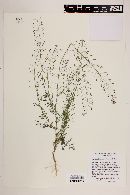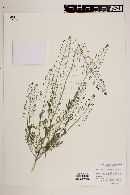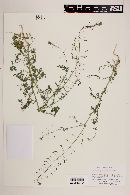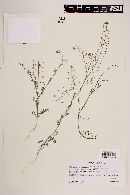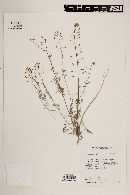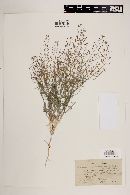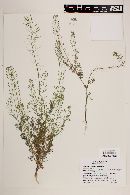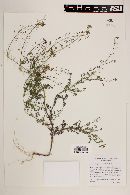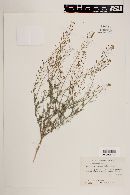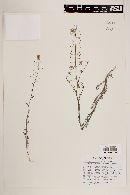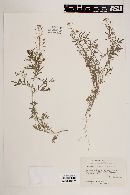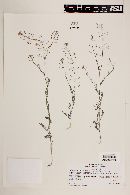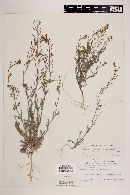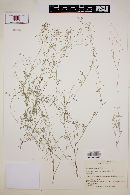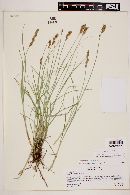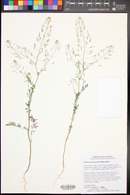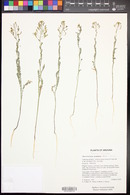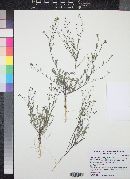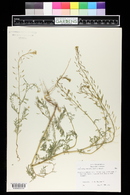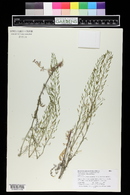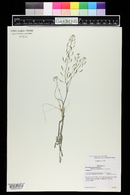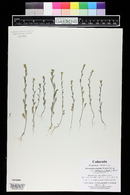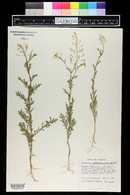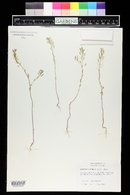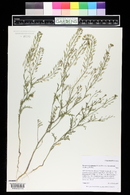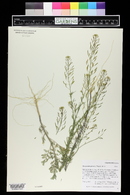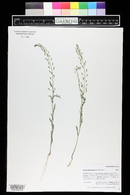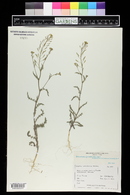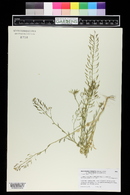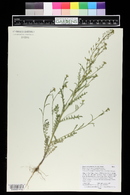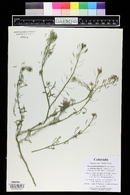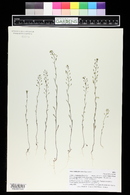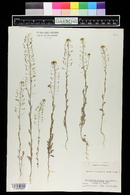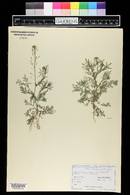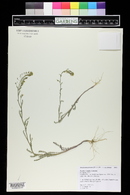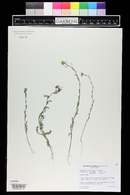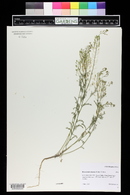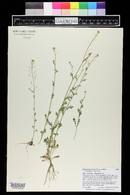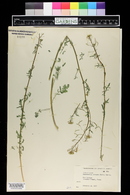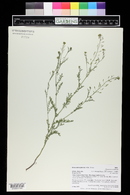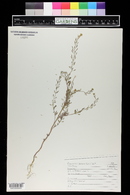
|
|
|
|
Family: Brassicaceae
Western Tansy-Mustard, more...yellow tansy mustard, tansy mustard, green tansy-mustard, pinnate tansy mustard, pinnate tansymustard, tansymustard (es: pamitón, pamita)
|
Annuals; glandular or egland-ular; sparsely to densely pubescent, sometimes glabrous distally, canescent or not, trichomes dendritic. Stems erect, unbranched or branched basally and/or distally, (0.8-)1.3-5.7(-9.2) dm. Basal leaves: petiole 0.5-3.6 cm; blade 1- or 2-pinnate, ovate or oblong to oblanceolate in outline, 1-15 cm, lateral lobes (4-9 pairs), linear or oblanceolate to ovate, margins entire or dentate. Cauline leaves sessile or shortly petiolate; blade smaller distally, distal lobes often narrower, surfaces densely pubescent. Racemes considerably elongated in fruit. Fruiting pedicels usually ascending to divaricate or horizontal, rarely descending (at 20-110º angle), straight or slightly recurved, 4-18 (-23) mm. Flowers: sepals spreading to ascending, yellow, purple, or rose, oblong, 0.8-2.6 mm, pubescent; petals (whitish or yellow), narrowly oblanceolate, 1-3 × 0.3-1 mm; median filaments 1-2.8 mm; anthers 0.2-0.4 mm. Fruits erect to ascending, usually clavate, rarely broadly linear (wider distally), not torulose, 4-13(-17) × 1.2-2.2 mm; valves each with distinct midvein; septum not veined; ovules 16-40 per ovary; style obsolete, 0.02-0.2 mm, glabrous. Seeds biseriate, reddish brown, oblong, 0.6-0.9 × 0.4-0.5 mm. Duration: Annual Nativity: Native Lifeform: Forb/Herb General: Annual herbs, 10-70 cm tall, from a slender taproot; stems usually branched, sparsely to densely pubescent, sometimes glabrous near the top, glandular or not. Leaves: Basal leaves on petioles, withering before flowering; stem leaves alternate, sessile or short-petiolate; blades 1-15 cm long, once or twice pinnate, with 4-9 pairs of linear to ovate lateral lobes, the margins entire or toothed; surfaces densely pubescent. Flowers: Whitish to yellow in terminal racemes, on 3-20 mm long pedicels which are ascending in flower and ascending to spreading and sometimes recurved when in fruit; sepals 4, spreading to ascending 1-3 mm long, yellow, purple, or rose; petals 4 in a cross formation, 1-3 mm long, whitish to yellow. Fruits: Capsules clavate (club-spaped), 4-15 mm long and 1-2 mm wide, erect to ascending, not at all constricted between the seeds, glabrous; seeds less than 1 mm long, oblong, reddish-brown, in two rows per locule. Ecology: Found in variety of soils and conditions, below 8,000 ft (2438 m); flowers April-August. Distribution: Throughout N. Amer. except for AK and Yukon, CAN. Notes: Descurainia is a genus of weedy-looking mustards with feathery, pinnately lobed leaves, racemes of inconspicuous white to yellow flowers, and narrow seed pods. The raceme is compact when in flower and then expands substantially in fruit so that the seed pods are well-spaced along the stalk. To distinguish among the various species of Descurainia, focus on the shape, size, and orientation of the seed pods. D. pinnata has seed pods which are a bit wider and rounded at the tip compared to the base (clavate, or club-shaped), about 1 cm long, not constricted between the seeds, and the pods point upwards even though the pedicels tend to be more horizontal or only slightly upward pointing. D. obtusa and D. sophia both have narrow (1 mm wide), linear seed pods longer than 1 cm 1 which are slightly constricted between the seeds and can be horizontal or upward pointing. There are 2 subspecies in our area. Subsp. glabra has glabrous central stalks of the racemes, and subsp. ochroleuca has canescent (white-woolly) stems and rose-colored or purple sepals. Host plant for Spring White, Checkered White, Pearly Marble, and Sara Orangetip butterflies. Ethnobotany: Edible greens and seeds. Tansy mustard appears in clan names and migration tales as an important plant. Etymology: Descurainia is named for French pharmacist and botanist Franscois Descourain (1658-1740); pinnata means feathered or winged, referring to the leaves. Synonyms: None Editor: SBuckley 2010, FSCoburn 2015, AHazelton 2017 Erect, 2-7 dm; lvs oblong to oblanceolate, the lower the larger, bipinnate, or pinnate with deeply pinnatifid segments, the upper progressively reduced and less dissected; fls 2-4 mm wide; mature racemes elongate, to 3 dm, with widely divergent pedicels 5-20 mm; frs narrowly clavate, 5-13 נ1-2 mm; seeds in 2 rows in each locule, at least near the middle; 2n=14, 28, 42. Dry, open or sparsely wooded places; throughout most of N. Amer. Two vars. in our range. Var. pinnata, occurring chiefly on the coastal plain from se. Va. to Tex., has canescent, nonglandular herbage (sometimes glandular in the infl), and spreading or ascending frs 5-10 (avg 1) mm. (Sisymbrium canescens) Var. brachycarpa (Richardson) Fernald, a chiefly northern plant extending s. to N. Engl., W.Va., Tenn., and Tex., has glandular (sometimes also hairy) herbage (incl. the infl) and ascending to erect frs 6-13 (avg 9) mm. (Sophia p.; S. incisa; S. intermedia; S. millefolia) Gleason, Henry A. & Cronquist, Arthur J. 1991. Manual of vascular plants of northeastern United States and adjacent Canada. lxxv + 910 pp. ©The New York Botanical Garden. All rights reserved. Used by permission. |
|
|
|
This project was made possible in part by the Institute of Museum and Library Services [MG-70-19-0057-19].
Powered by Symbiota

